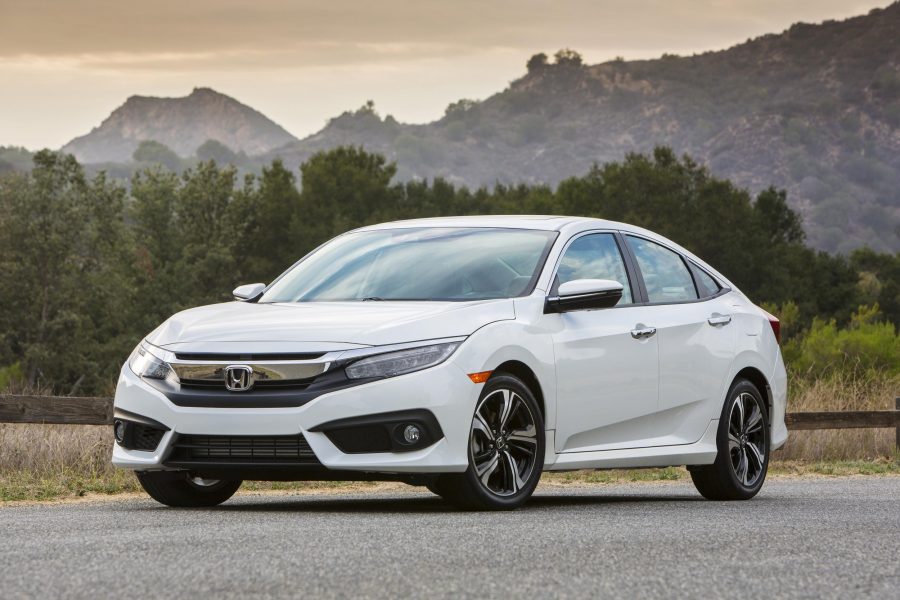While electric cars are a polarizing topic, there’s no denying that electric vehicles are the future of transportation. And as most automakers have announced plans to fully electrify their vehicle lineups as early as 2025, many consumers are curious about the cost of electric vehicles compared to their internal combustion engine counterparts.
So does it pay to drive an electric vehicle? Let’s take a closer look at the numbers.
Electric Cars Vs. Gasoline Cars: Upfront Costs for New Cars
When comparing the upfront costs of electric cars vs. gasoline cars, the average new electric car costs over $11,000 more than a traditional gasoline car. However, there are federal and state EV tax credits that can defray these higher upfront costs for electric cars . For example, the Inflation Reduction Act of 2022 has widened the eligibility for the federal tax credit , which (starting January 1st, 2023) applies to automakers that had previously sold more than 200,000 units and were eligible for the credit. This credit will now be available through 2032, regardless of how many electric vehicles an automaker has sold. On top of the federal tax credit , many states offer their own tax incentives , typically in the $500 to $2,500 range, to further lower the purchase price of EVs.Electric Cars Vs. Gas-Powered Cars: Fuel Vs. Electricity Costs
Along with being zero-emission vehicles, another allure of an electric vehicle is never having to fill up at a gas station . Instead, electric cars are powered by electricity and require home and/or public charging. How do electricity costs compare to gasoline costs? Here is a comparison by state.First, we look at annual fuel costs for drivers of gas-powered vehicles in each state, which take into account the state’s residents’ average annual driving mileage, MPG, and fuel prices.
| Average Annual Fuel Cost by State | ||||
| State | Regular | Average Mileage Per Year | Average Vehicle MPG | Annual Fuel Cost |
| Alabama | $3.38 | 14,276 | 22.82 | $2,114 |
| Alaska | $5.55 | 7,761 | 21.44 | $2,009 |
| Arizona | $4.56 | 13,116 | 23.39 | $2,557 |
| Arkansas | $3.39 | 15,850 | 22.23 | $2,417 |
| California | $6.33 | 11,071 | 24.19 | $2,897 |
| Colorado | $3.74 | 11,520 | 22.13 | $1,947 |
| Connecticut | $3.43 | 10,779 | 23.44 | $1,577 |
| Delaware | $3.57 | 14,450 | 23.22 | $2,222 |
| Florida | $3.33 | 12,914 | 23.86 | $1,802 |
| Georgia | $3.23 | 14,676 | 23.22 | $2,041 |
| Hawaii | $5.22 | 11,583 | 24.28 | $2,490 |
| Idaho | $4.42 | 11,492 | 21.52 | $2,360 |
| Illinois | $4.40 | 11,464 | 22.77 | $2,215 |
| Indiana | $4.20 | 12,720 | 22.68 | $2,356 |
| Iowa | $3.71 | 9,475 | 21.38 | $1,644 |
| Kansas | $3.52 | 12,251 | 22.15 | $1,947 |
| Kentucky | $3.52 | 16,559 | 22.36 | $2,607 |
| Louisiana | $3.31 | 11,484 | 22.54 | $1,686 |
| Maine | $3.63 | 13,856 | 22.38 | $2,247 |
| Maryland | $3.69 | 13,041 | 23.94 | $2,010 |
| Massachusetts | $3.57 | 10,027 | 23.42 | $1,528 |
| Michigan | $4.35 | 11,593 | 22.09 | $2,283 |
| Minnesota | $3.79 | 11,361 | 21.75 | $1,980 |
| Mississippi | $3.26 | 15,522 | 22.65 | $2,234 |
| Missouri | $3.48 | 14,648 | 22.42 | $2,274 |
| Montana | $4.06 | 9,629 | 20.52 | $1,905 |
| Nebraska | $3.63 | 11,168 | 21.40 | $1,894 |
| Nevada | $5.44 | 14,461 | 23.73 | $3,315 |
| New Hampshire | $3.48 | 11,430 | 23.02 | $1,728 |
| New Jersey | $3.62 | 10,555 | 23.53 | $1,624 |
| New Mexico | $3.80 | 14,890 | 22.92 | $2,469 |
| New York | $3.63 | 12,610 | 23.53 | $1,945 |
| North Carolina | $3.50 | 14,384 | 23.14 | $2,176 |
| North Dakota | $3.76 | 10,401 | 20.52 | $1,906 |
| Ohio | $3.92 | 10,117 | 23.08 | $1,718 |
| Oklahoma | $3.55 | 14,382 | 22.59 | $2,260 |
| Oregon | $5.53 | 11,587 | 23.15 | $2,768 |
| Pennsylvania | $3.89 | 11,052 | 23.12 | $1,860 |
| Rhode Island | $3.48 | 11,005 | 23.48 | $1,631 |
| South Carolina | $3.36 | 14,715 | 22.74 | $2,174 |
| South Dakota | $3.79 | 10,640 | 20.69 | $1,949 |
| Tennessee | $3.40 | 13,638 | 22.85 | $2,029 |
| Texas | $3.27 | 15,641 | 23.09 | $2,215 |
| Utah | $4.16 | 13,884 | 23.05 | $2,506 |
| Vermont | $3.75 | 13,228 | 23.15 | $2,143 |
| Virginia | $3.50 | 12,372 | 23.07 | $1,877 |
| Washington | $5.40 | 10,424 | 22.78 | $2,471 |
| West Virginia | $3.54 | 13,346 | 22.19 | $2,129 |
| Wisconsin | $3.98 | 13,118 | 22.27 | $2,344 |
| Wyoming | $3.92 | 13,813 | 20.40 | $2,654 |
| Annual Average | $3.919 | $12,416 | 23.06 | $2,110 |
Next we examine average annual residential charging costs, which takes into account each state’s electricity costs. We used the Volkswagen ID.4 Pro as our sample electric vehicle.
| Cost of Charging an Electric Vehicle Assuming annual driving distance of 14,263 miles in a 2022 VW ID.4 Pro RWD |
||||
| Average Price of Residential Electricity by State | *Cents per kWh (June 2022) |
Cost to fully charge 77 kWh battery, 0-100% (in dollars) | Cost per mile (in cents) | Annual Charging Cost |
| Alabama | 14.79 | $11.39 | 4.14 | $590 |
| Alaska | 24.01 | $18.49 | 6.72 | $958 |
| Arizona | 13.21 | $10.17 | 3.70 | $528 |
| Arkansas | 12.56 | $9.67 | 3.52 | $502 |
| California | 28.98 | $22.31 | 8.11 | $1157 |
| Colorado | 14.42 | $11.10 | 4.04 | $576 |
| Connecticut | 25.43 | $19.58 | 7.12 | $1016 |
| Delaware | 13.37 | $10.29 | 3.74 | $533 |
| Florida | 13.90 | $10.70 | 3.89 | $555 |
| Georgia | 15.27 | $11.76 | 4.28 | $619 |
| Hawaii | 44.09 | $33.95 | 12.35 | $1761 |
| Idaho | 11.38 | $8.76 | 3.19 | $455 |
| Illinois | 16.79 | $12.93 | 4.70 | $670 |
| Indiana | 14.81 | $11.40 | 4.15 | $592 |
| Iowa | 14.98 | $11.53 | 4.19 | $598 |
| Kansas | 14.52 | $11.18 | 4.07 | $581 |
| Kentucky | 13.13 | $10.11 | 3.68 | $525 |
| Louisiana | 12.79 | $9.85 | 3.58 | $511 |
| Maine | 24.22 | $18.65 | 6.78 | $967 |
| Maryland | 14.67 | $11.30 | 4.11 | $586 |
| Massachusetts | 25.20 | $19.40 | 7.06 | $1007 |
| Michigan | 18.11 | $13.94 | 5.07 | $723 |
| Minnesota | 15.00 | $11.55 | 4.20 | $599 |
| Mississippi | 12.64 | $9.73 | 3.54 | $505 |
| Missouri | 14.07 | $10.83 | 3.94 | $562 |
| Montana | 11.61 | $8.94 | 3.25 | $464 |
| Nebraska | 11.60 | $8.93 | 3.25 | $464 |
| Nevada | 13.18 | $10.15 | 3.69 | $526 |
| New Hampshire | 22.72 | $17.49 | 6.36 | $907 |
| New Jersey | 17.27 | $13.30 | 4.84 | $690 |
| New Mexico | 14.14 | $10.89 | 3.96 | $565 |
| New York | 22.38 | $17.23 | 6.27 | $894 |
| North Carolina | 11.83 | $9.11 | 3.31 | $472 |
| North Dakota | 13.11 | $10.09 | 3.67 | $523 |
| Ohio | 14.33 | $11.03 | 4.01 | $572 |
| Oklahoma | 13.16 | $10.13 | 3.68 | $525 |
| Oregon | 11.79 | $9.08 | 3.30 | $471 |
| Pennsylvania | 16.51 | $12.71 | 4.62 | $659 |
| Rhode Island | 23.63 | $18.20 | 6.62 | $944 |
| South Carolina | 14.21 | $10.94 | 3.98 | $568 |
| South Dakota | 13.31 | $10.25 | 3.73 | $532 |
| Tennessee | 12.35 | $9.51 | 3.46 | $493 |
| Texas | 13.30 | $10.24 | 3.72 | $531 |
| Utah | 11.24 | $8.65 | 3.15 | $449 |
| Vermont | 20.47 | $15.76 | 5.73 | $817 |
| Virginia | 13.53 | $10.42 | 3.79 | $541 |
| Washington | 10.49 | $8.08 | 2.94 | $419 |
| West Virginia | 13.76 | $10.60 | 3.85 | $549 |
| Wisconsin | 16.15 | $12.44 | 4.52 | $645 |
| Wyoming | 11.75 | $9.05 | 3.29 | $469 |
| U.S. National Average | 15.42 | $11.87 | 4.32 | $616 |
The average American will spend $2,110 on gasoline to fuel their car each year, while the average annual cost of electricity to power their EV costs $616.
Electric Cars: Additional Charging Costs
The vast majority of electric car charging is typically done at home. All plug-in hybrid electric vehicles ( PHEVs ) and battery electric vehicles (BEVs) are sold with a 110-volt/Level 1 home charging kit that enables your vehicle to plug into a standard wall outlet with an adapter. While this method doesn’t require any special equipment or installation, it only provides three to five miles of range per hour of charging. (For more information on charging times, visit our handy guide that breaks down how long it takes to charge an electric car .)The most common home EV charging equipment is the Level 2, 240-volt charger, which can provide between 12 and 60 miles of range per hour. This level of charging is also what’s found in most public charging stations and can be installed in most homes by a professional electrician using either a 40 or 50 amp circuit. Installation can cost between $500 and $2,000. Some local tax incentives and rebates can help offset this cost, so be sure to research the charger incentives that are available in your area.
Public charging stations typically charge by the kilowatt-hour (kWh), which measures the amount and rate of energy transferred to the car’s battery pack. Along with Level 2 public charging stations, there are also Level 3 chargers, known as DC fast charging or DCFC chargers, that provide the quickest way to charge your vehicle.
A level 3 DC fast charging station can get an electric vehicle’s battery from around 10 percent to around 80 percent of capacity in 20-30 minutes, which makes them ideal for charging during road trips.
Tesla has its own fast charging network, known as Tesla Superchargers. All level 3 charging stations are more expensive than level 2 charging stations. However, some public chargers are free, so it’s worth doing research to see if there are any free public chargers in your area.
Electric Cars Vs. Gasoline Cars: Maintenance Costs
When it comes to maintenance costs , all-electric cars have a distinct advantage over gasoline vehicles . Due to the absence of an internal combustion engine , electric cars don’t require oil changes , spark plug changes, catalytic converters, or any equipment related to emissions . The regenerative braking system on battery-powered cars also extends the life of the braking system, and the cooling system for EVs is much simpler to regulate battery pack temperatures. Electric cars do require basic routine maintenance including tire rotations and basic service checks.One concern for EV owners is the replacement cost for a vehicle’s battery pack. A battery pack is the most expensive part of an electric car, and can cost upwards of $20,000. Although battery life can vary, EV manufacturers are required to issue a warranty for at least 8 years or 100,000 miles. Kia offers a battery pack warranty for 10 years or 100,000 miles, and Hyundai provides warranty coverage on EV batteries for the vehicle’s entire lifetime.
As engineering continues to evolve, batteries are designed to last the entire life of the vehicle with the right maintenance and care. This means that a battery replacement should not be factored into ownership costs for the typical EV driver.
Bottom Line:
Range anxiety and perceived high costs still limit many consumers from fully embracing EVs. However, battery technology continues to evolve, and today’s EVs have larger batteries with increased range. For example, the newest Nissan LEAF has a maximum driving range of 212 miles compared to the first generation, which had a maximum range of 84 miles. Modern EVs have battery ranges that far exceed the mileage most drivers travel in a day, and improvements in infrastructure have led to more public charging stations to help further quell range anxiety. And when it comes to cost, federal and state incentives, plus the fuel savings EVs offer over conventional vehicles, make EVs a smart purchase decision for many consumers. And with more EV options entering the market, from SUVs to sports cars to pickup trucks, consumers looking to purchase a new vehicle while saving on personal transportation costs over the long term should consider going electric.
More from iSeeCars:
- How Much Does it Cost to Charge an Electric Car?
- New EV Tax Credits Explained
- Electric Cars with the Longest Range


































































